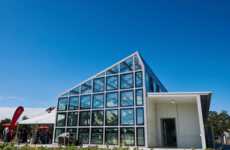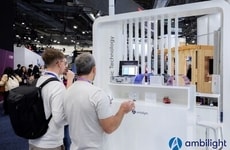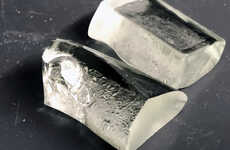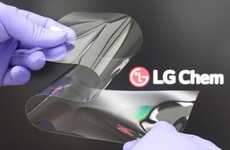
The University of Texas' Glass is Electronically Controlled
References: news.utexas.edu & engadget
Researchers from the Cockerell School of Engineering at the University of Texas have created a new form of electrochromic glass that has the potential to be used in commercially viable smart windows.
The concept of electrochromic glass, or glass that can be tinted and cleared through electronic control, is not new. However, previous iterations of the material have either been excessively expensive or logistically impractical due to the need for extremely high temperatures during installation. The Cockerell School engineers have invented not only better, more flexible electrochromic glass, but also a low-temperature installation process.
If universally employed in homes and buildings around the world, smart windows made with electrochromic glass could save unprecedented amounts of money and energy due to the increased efficiency of heating and cooling.
The concept of electrochromic glass, or glass that can be tinted and cleared through electronic control, is not new. However, previous iterations of the material have either been excessively expensive or logistically impractical due to the need for extremely high temperatures during installation. The Cockerell School engineers have invented not only better, more flexible electrochromic glass, but also a low-temperature installation process.
If universally employed in homes and buildings around the world, smart windows made with electrochromic glass could save unprecedented amounts of money and energy due to the increased efficiency of heating and cooling.
Trend Themes
1. Electrochromic Glass Advancement - The development of more flexible and lower-temperature installation processes for electrochromic glass creates opportunities for cost-effective smart window solutions.
2. Smart Window Technology - The potential cost and energy savings of electrochromic smart windows could disrupt the traditional window industry and accelerate the transition to sustainable buildings.
3. Energy Efficiency Innovation - The use of electrochromic glass in buildings contributes to the growing trend towards sustainable, energy-efficient technologies and presents new opportunities for research and development.
Industry Implications
1. Window Manufacturing - The technological improvements in electrochromic glass present opportunities for window manufacturers to incorporate cost-effective and energy-saving solutions into their products.
2. Smart Home Automation - Electrochromic smart windows can fit into the larger trend of home automation and smart technologies, offering new possibilities for energy management and control.
3. Green Construction - The use of electrochromic glass in buildings can disrupt the traditional construction industry by promoting sustainable materials and energy-efficient designs.
3.3
Score
Popularity
Activity
Freshness























